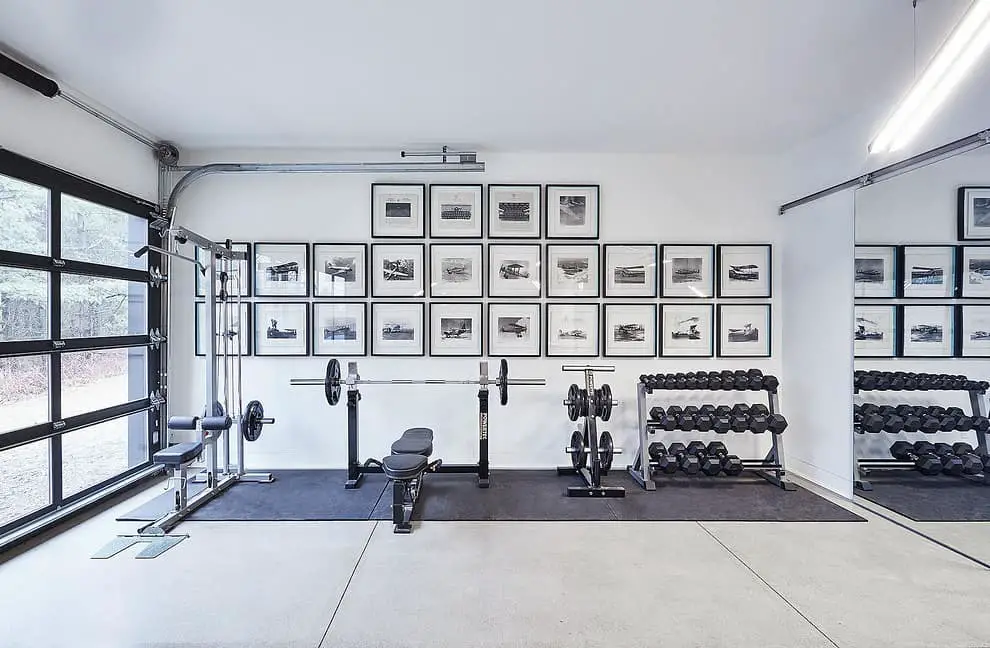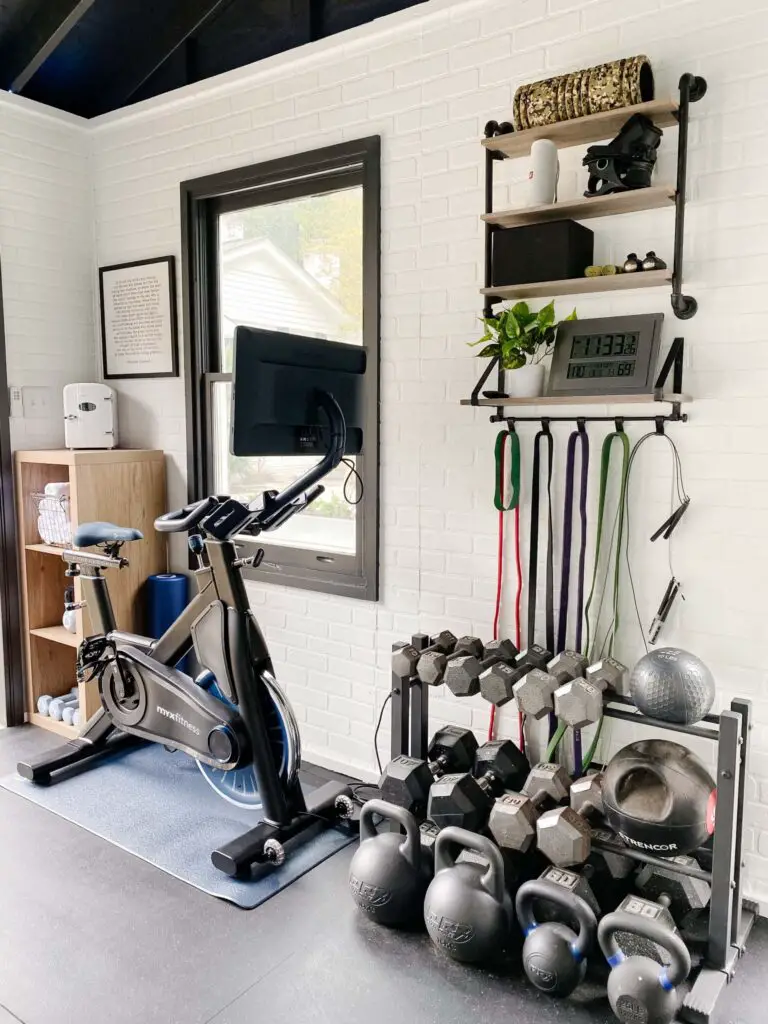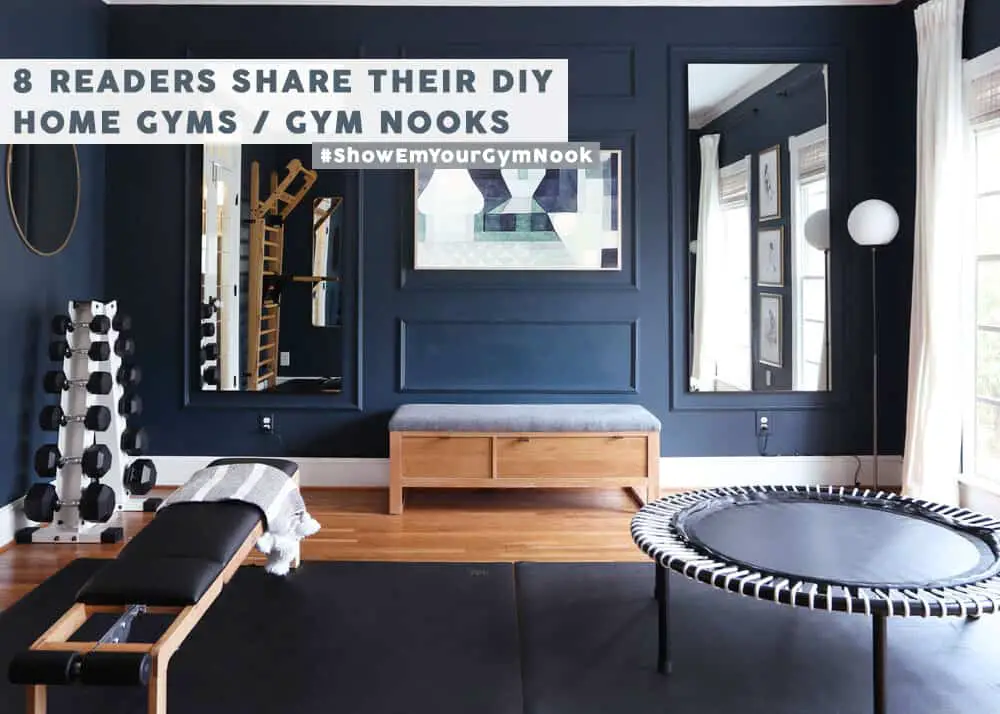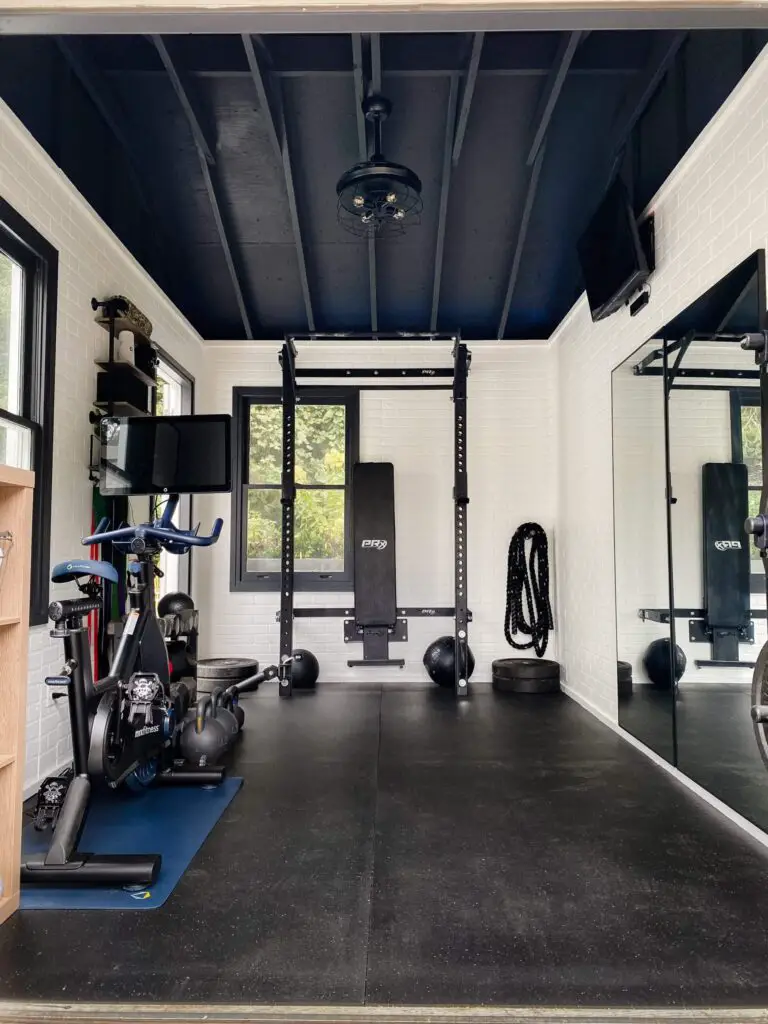So, you want to stay fit, but going to the gym is just too expensive and inconvenient. I totally get it! Well, have you ever considered creating your own home gym? Trust me, it’s not as expensive or complicated as you might think. In fact, I’ve got some amazing affordable DIY home gym ideas that will help you save money while still getting in shape. In this article, I’ll share with you some creative ways to build your own gym at home without breaking the bank.
Let’s face it, living a frugal lifestyle is all about finding ways to save money and still enjoy the things that are important to us. And staying fit is definitely one of those things, at least for me. Going to the gym and paying those monthly membership fees can really add up over time. That’s why I decided to explore the world of DIY home gyms and boy, was I pleasantly surprised!
With a little creativity and some smart shopping, you can create your very own home gym without spending a fortune. From resistance bands and weight plates to jump ropes and yoga mats, there are so many affordable and versatile pieces of equipment out there. In this article, I’ll not only share some budget-friendly equipment ideas, but also some tips on how to maximize your space and create a functional workout area in your home. So, stay tuned, because you’re about to learn how to save money while still staying fit with these 10 affordable DIY home gym ideas.

10 Affordable DIY Home Gym Ideas
As a fitness enthusiast who is always on the lookout for ways to stay healthy and active, having a DIY home gym has been a game-changer for me. Not only does it provide convenience and accessibility, but it also offers significant cost savings compared to a traditional gym membership. In this article, I will share with you 10 affordable DIY home gym ideas that will help you achieve your fitness goals without breaking the bank.
Convenience and Accessibility
One of the biggest benefits of having a DIY home gym is the convenience and accessibility it provides. No longer do you have to worry about rushing to the gym after work or dealing with crowded facilities. With a home gym, you have the luxury of working out whenever it fits into your schedule, without the need to travel or wait for equipment.
Cost Savings
Another major advantage of a DIY home gym is the cost savings it offers. Gym memberships can be expensive, especially if you factor in additional fees such as initiation or cancellation charges. By setting up your own gym at home, you can eliminate these recurring fees and save a significant amount of money in the long run.
Flexibility in Exercise Options
Having a DIY home gym provides you with the flexibility to choose from a wide range of exercise options. Whether you prefer cardio, strength training, or yoga, you can customize your workout routine to suit your individual needs and preferences. This flexibility allows you to target specific areas of your body and work towards achieving your fitness goals more effectively.
Customization and Personalization
When it comes to a DIY home gym, you have complete control over the design and setup of your workout space. This means you can personalize it according to your specific needs and preferences. From choosing the color scheme to selecting the equipment, you can create a space that motivates and inspires you to stay consistent with your fitness routine.
Setting Up Your DIY Home Gym
Now that we’ve discussed the benefits of having a DIY home gym, let’s delve into the practical aspects of setting one up. Here are the steps you need to follow to create your own affordable workout space:
Determine Your Fitness Goals
Before you start building your DIY home gym, it’s essential to determine your fitness goals. Are you looking to lose weight, build muscle, or improve your overall fitness level? Identifying your objectives will help you make informed decisions when it comes to choosing the right equipment and designing your workout space.
Designate a Suitable Space
Next, designate a suitable space in your home for your DIY gym. It could be your spare bedroom, basement, garage, or even a dedicated corner of your living room. Ensure that there is enough room for the equipment you plan to incorporate and that it offers a comfortable and inviting atmosphere for your workouts.
Consider Safety Measures
Safety should be a top priority when setting up your DIY home gym. Make sure the designated space is well-ventilated and free from clutter or potential hazards. Consider installing appropriate lighting, safety mats, and handrails if required, to minimize the risk of accidents or injuries during your workouts.
Choose Essential Equipment
When it comes to finding affordable equipment for your DIY home gym, it’s important to focus on the essentials. Here are five budget-friendly options that can help you get started:
Resistance Bands
Resistance bands are versatile, portable, and can be used for a variety of exercises. They provide resistance for both upper and lower body workouts and are an excellent choice for individuals of all fitness levels.
Dumbbells
Dumbbells are a classic piece of equipment that can be used for a wide range of exercises, including strength training and muscle-building. Start with a set of adjustable dumbbells to save space and money.
Jump Rope
A jump rope is an affordable and effective tool for cardiovascular workouts. It helps improve coordination, endurance, and burn calories. Plus, it requires minimal space and can be easily stored.
Stability Ball
A stability ball is an excellent addition to any home gym. It can be used for core exercises, balance training, and even as a chair alternative. Look for a durable and anti-burst stability ball that suits your height and weight.
Kettlebells
Kettlebells provide a full-body workout and are a great addition to your strength training routine. They are available in various weights and can help improve strength, power, and coordination.
Select Suitable Flooring
The flooring you choose for your DIY home gym is crucial in terms of safety and comfort. Here are several budget-friendly options to consider:
Interlocking Foam Tiles
Interlocking foam tiles are easy to install, affordable, and provide excellent shock absorption. They create a cushioned surface that helps protect your joints and equipment from damage during workouts.
Plywood with Rubber Mat
If you’re looking for a more cost-effective option, consider using plywood as the base layer and covering it with a rubber mat. This combination offers durability, stability, and protection against impact or scratches.
Carpet Tiles with Impact Mats
Carpet tiles are an affordable flooring option that provides both comfort and protection. Pair them with impact mats, specifically designed to absorb shock during high-impact exercises, for added safety.
Used Rubber Gym Flooring
If you’re on a tight budget, consider purchasing used rubber gym flooring. Many gyms or fitness centers upgrade their flooring regularly, and you may be able to find a good deal on used rubber mats or tiles.

DIY Gym Storage Solutions
Now that we have covered the basics of setting up your DIY home gym, let’s discuss some creative storage solutions that can help you keep your workout space organized and clutter-free. Here are four ideas to consider:
Pegboards and Hooks
Pegboards and hooks are affordable and versatile storage solutions that can be easily installed on your gym walls. They allow you to hang resistance bands, jump ropes, and other small equipment, keeping them within reach and off the floor.
Overhead Racks
If you have a high ceiling in your gym space, consider installing overhead racks. These racks provide storage for larger items such as kettlebells or weights and utilize the vertical space effectively.
Wall-Mounted Shelves
Wall-mounted shelves are a practical storage option for items like dumbbells, yoga mats, or foam rollers. They help keep your equipment organized and allow for easy access during your workouts.
Bins and Baskets
Utilize bins and baskets to store smaller accessories such as exercise balls, resistance bands, or workout gloves. Label the bins for easy identification and keep them on shelves or in cabinets to maintain an organized appearance.
Creating a Motivating Environment
To stay motivated and committed to your fitness routine, it’s important to create a motivating environment in your DIY home gym. Here are four ideas to help you achieve that:
Inspiring Wall Art
Hang inspirational quotes, posters, or photographs that resonate with your fitness goals. Surrounding yourself with positive and motivational images can help keep you focused and determined to achieve your workout objectives.
Full-Length Mirrors
Installing full-length mirrors on one wall of your gym can serve multiple purposes. They not only help you maintain proper form while exercising but also create an illusion of a larger space, making your DIY gym feel more open and inviting.
Music and Speaker Setup
Set up a music system or speakers in your gym space to enhance your workout experience. Listening to your favorite tunes or motivational playlists can boost your energy levels and make your workouts more enjoyable.
Natural Lighting
Whenever possible, take advantage of natural lighting in your DIY home gym. Open the blinds or curtains during the day to let in natural sunlight, making your space feel more vibrant and uplifting.

Functional DIY Gym Ideas
In addition to the essential equipment mentioned earlier, here are five functional DIY gym ideas that can add variety and challenge to your workouts:
Plyometric Box
A plyometric box, also known as a jump box, can be easily built with plywood and provides a versatile platform for plyometric exercises, step-ups, or box jumps. Look for tutorials online to create your customized plyometric box that suits your fitness level.
Suspension Trainer
A suspension trainer, such as a TRX or similar system, allows you to perform a wide range of bodyweight exercises. It is easy to set up, portable, and provides an effective way to challenge your strength, balance, and stability.
Battle Ropes
Battle ropes are versatile and can be used for high-intensity cardio workouts or strength training exercises. They target multiple muscle groups, improve endurance, and are an excellent addition to any DIY home gym.
Pull-Up Bar
A pull-up bar is a classic piece of equipment that can be easily mounted on a wall or doorway. It offers a challenging upper body workout and allows for various grip positions to target different muscle groups.
Yoga Mat and Blocks
For those who enjoy yoga or stretching exercises, investing in a good-quality yoga mat and a set of yoga blocks can enhance your practice at home. These items provide support and stability, making your yoga or stretching sessions more comfortable and effective.
DIY Cardio Equipment
If you’re looking for additional cardio options for your DIY home gym but want to stick to a budget, here are three ideas for creating your own cardio equipment:
Treadmill from Conveyor Belt
You can repurpose a conveyor belt, found at a local recycling center or industrial supply store, into a budget-friendly treadmill. Secure it on a sturdy frame and adjust the speed manually to create your customized cardio machine.
Stair Stepper from Milk Crates
Milk crates are widely available and can be used to create a homemade stair stepper. Stack them up, ensuring stability, and step up and down while holding onto a railing or wall for support.
Stationary Bike from Bike Trainer
Convert your bicycle into a stationary bike by using a bike trainer. Bike trainers allow you to attach your bike to a resistance unit, giving you the ability to pedal indoors without actually moving. This option is cost-effective and also allows you to utilize your existing bicycle.

Budget-Friendly Gym Flooring Options
As mentioned earlier, choosing the right flooring for your DIY home gym is crucial for safety and comfort. Here are four budget-friendly options to consider:
Interlocking Foam Tiles
Interlocking foam tiles are an excellent option for gym flooring as they are affordable, easy to install, and provide adequate cushioning. These tiles come in various thicknesses and colors, giving you the flexibility to customize your gym floor.
Plywood with Rubber Mat
If you’re on a tight budget, consider using plywood with a rubber mat on top as an alternative flooring option. Plywood provides stability, while the rubber mat offers grip and protection against impact.
Carpet Tiles with Impact Mats
Carpet tiles are a cost-effective flooring option that provides both comfort and insulation. Combining them with impact mats ensures extra protection during high-impact exercises or strength training sessions.
Used Rubber Gym Flooring
If you’re willing to put in some effort, try searching for used rubber gym flooring. Many gyms or fitness centers upgrade their flooring regularly and may sell their used mats or tiles at a discounted price. While they may have some signs of wear, they are still a durable and affordable option.
Incorporating Technology in Your DIY Home Gym
With advancements in technology, incorporating tech elements into your DIY home gym can significantly enhance your workout experience. Here are three ways you can integrate technology into your fitness routine:
Fitness Tracking Apps
There are various fitness tracking apps available for smartphones or smartwatches that can help you monitor your progress, track your workouts, and set goals. These apps can provide valuable insights into your fitness journey and keep you motivated to achieve your targets.
Smart Home Gym Equipment
Investing in smart home gym equipment, such as interactive fitness mirrors or connected fitness devices, can offer a more engaging and interactive workout experience. These devices often come with built-in trainers and a variety of workout programs to choose from, making your DIY gym feel like a professional fitness studio.
Online Workout Classes
Using platforms like YouTube or fitness apps, you can access a vast library of online workout classes. Whether it’s cardio, strength training, or yoga, you can find classes led by certified trainers that cater to different fitness levels and goals. This allows you to diversify your workouts and stay motivated.

Creating a Versatile Workout Space
To maximize the functionality of your DIY home gym, it’s essential to create a versatile workout space that can accommodate various exercises and equipment. Here are three ideas to help you achieve a versatile workout space:
Multi-Purpose Equipment
Invest in multi-purpose equipment that allows you to perform a wide range of exercises without taking up too much space. For example, adjustable dumbbells or resistance bands with different resistance levels can provide versatility and save storage space.
Foldable Equipment
Consider purchasing foldable equipment that can be easily stored when not in use. Items like foldable weight benches, exercise mats, or cardio machines can be compacted and kept away, making your DIY gym more flexible.
Modular Storage Systems
Utilize modular storage systems, such as shelves or cabinets with adjustable compartments, to create a flexible storage solution for your equipment. These systems allow you to rearrange shelves or add/remove compartments as needed, providing space for different types and sizes of equipment.
Maintaining and Cleaning Your DIY Home Gym
Keeping your DIY home gym clean and well-maintained is essential for the longevity of your equipment and your overall safety. Here are four tips to help you maintain and clean your gym space:
Regular Equipment Inspection
Regularly inspect your equipment for wear and tear, loose parts, or any potential hazards. Repair or replace damaged equipment promptly to ensure your safety during workouts.
Wiping Down Equipment
After each workout session, wipe down your equipment, especially high-contact areas such as handles or seats, with a disinfectant to prevent the buildup of germs or bacteria.
Vacuuming or Sweeping Floors
Depending on the type of flooring you have in your DIY home gym, vacuum or sweep the floors regularly to remove dust, dirt, or debris. This will help keep your gym space clean and prevent any damage to the flooring.
Replacing Worn-Out Equipment
Pay attention to signs of wear and tear in your equipment and replace any worn-out or damaged items promptly. This will ensure that your workouts are safe and effective.
Safety Tips for DIY Home Gyms
While having a DIY home gym offers numerous benefits, it’s crucial to prioritize safety during your workouts. Here are four safety tips to keep in mind:
Proper Equipment Assembly
Follow the manufacturer’s instructions carefully when assembling your equipment. Make sure all parts are securely tightened and that the equipment is stable and safe to use.
Appropriate Warm-Up and Stretching
Before starting your workouts, warm up your muscles with dynamic stretches and perform some light cardio. This will help prevent injuries and prepare your body for exercise.
Maintaining Proper Form
Always maintain proper form during your exercises to avoid strain or injuries. If you’re unsure about the correct technique, seek guidance from a fitness professional or use online resources to ensure you’re performing exercises correctly.
Having a Workout Buddy
Consider having a workout buddy, whether it’s a family member, friend, or neighbor, to exercise with you or be available in case of emergencies. Having someone present during your workouts can provide an added layer of safety and support.
Maximizing Space in a Small Home Gym
If you have limited space for your DIY home gym, don’t worry, there are still ways to fully optimize your workout area. Here are four tips for maximizing space in a small home gym:
Wall-Mounted Storage
Utilize vertical space by installing wall-mounted storage solutions such as shelves, hooks, or pegboards. This will help free up floor space and keep your equipment organized and easily accessible.
Folding Equipment
Invest in folding or collapsible equipment that can be easily stored when not in use. Foldable weight benches, treadmills, or exercise bikes are excellent space-saving options for small home gyms.
Utilizing Vertical Space
Take advantage of vertical space by mounting equipment on the walls, such as resistance bands or exercise tubes. This will keep them out of the way while still being easily reachable for your workouts.
Mirrors for Illusion of Space
Strategically place mirrors in your small home gym to create an illusion of more space. Mirrors reflect light and make your gym area appear larger and more open, giving it a more spacious and inviting feel.
Conclusion
Embracing a frugal lifestyle doesn’t mean compromising on your fitness goals. With an affordable DIY home gym, you can save money while enjoying the convenience and accessibility of working out in the comfort of your own space. By following these 10 affordable DIY home gym ideas, you can create a customized workout area that caters to your fitness needs, motivates you to stay consistent, and helps you achieve your health and wellness goals. So why wait? Start building your DIY home gym today and take your fitness journey to the next level.

